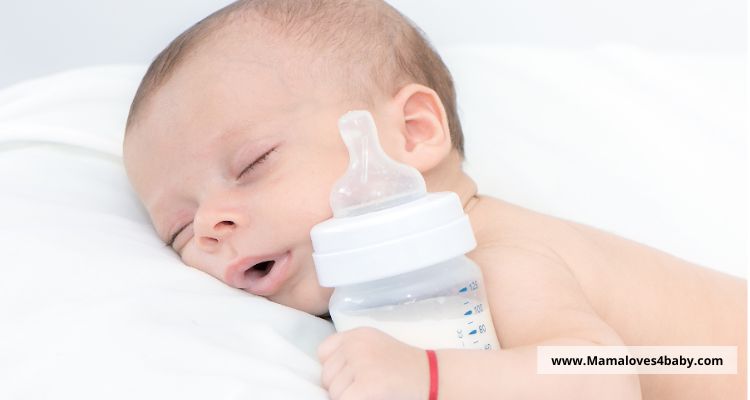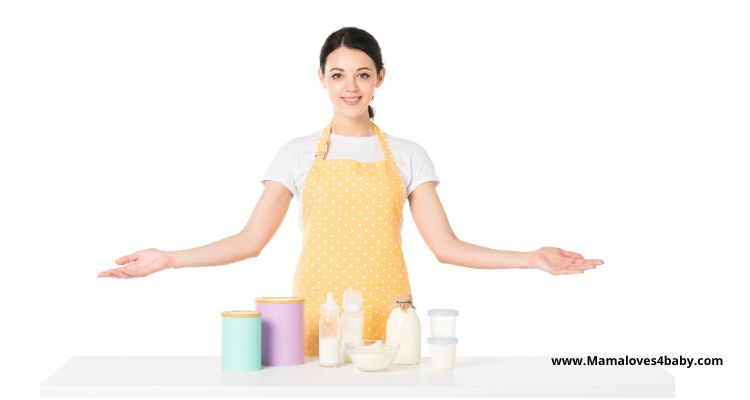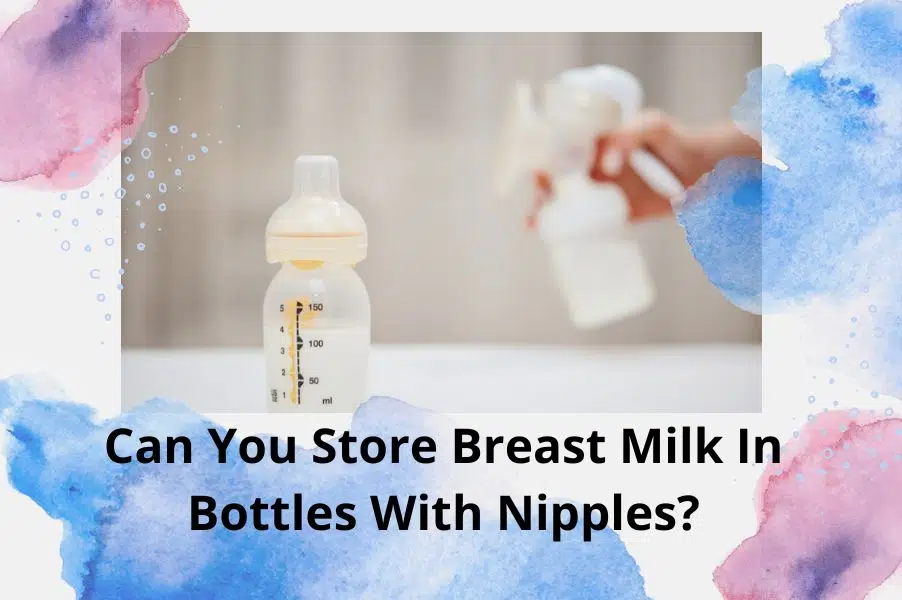Considering how often you should replace baby bottles is an important part of taking care of your little one. Most bottles are designed to last through several cycles, but they might need to be replaced more frequently depending on how often and what you’re using them for. Here’s what you need to know about when and how to change your baby’s bottles.
It is important to replace baby bottles often, as old bottles can harbour bacteria and germs. Bacteria can cause illness in babies, so keeping their bottles clean and changing them when necessary is crucial. However, if your bottle becomes dirty or cracked, it should be replaced immediately.
Related: Can You Store Breast Milk In Bottles With Nipples

If you’re a new parent, you probably wonder how often should you replace baby bottles. The short answer is that it depends on how often the bottle is being used and how well it’s being cleaned. However, most experts recommend replacing bottles and nipples every three to four months. Here’s more information on why baby bottle replacement is important and what factors to consider when deciding.
What factors determine how often should you replace baby bottles and teats?
Most experts recommend replacing baby bottles every three to four months. However, a few factors can affect how often should you change out baby bottles, and why do you need to replace baby bottles.
Wear and Tear
Over time, baby bottles can show signs of wear and tear, such as cracks or chips, leaving sharp edges that could cut your baby’s mouth. These imperfections can create bacteria hiding places and make the bottle more difficult to clean properly.
Additionally, the plastic in older bottles may break down and leach chemicals into the milk or formula, harmful to your baby. If you notice any damage to your baby’s bottles, it’s best to replace them.
Hygiene
One of the most important things to consider when replacing baby bottles is hygiene. Baby bottles can easily become contaminated with bacteria, leading to illness. That’s why it’s important to clean them thoroughly after each use following frequent replacement.
Must Read: How to clean cloudy baby bottle nipples?

Baby growing needs
How often to change baby bottles? Another reason to replace bottles regularly is that their feeding needs will change as your baby grows. For example, as they get older, you may need to switch from a bottle with a smaller nipple to one with a larger nipple and take in more milk at each feeding. Therefore, your baby will not struggle or pull hard and can easily get a faster milk flow.
It is also essential for parents to consider switching from a standard baby bottle to a sippy cup or straw cup as they get older by the end of their first year and can drink from those cups.
In general, it’s a good idea to have several spare baby bottle nipples on hand so that you’re never without a clean one.
Discoloration and thinning of baby bottle nipples
Another sign that it’s time to change your baby’s bottles is if you notice a thinning nipple or discolouration. Over time, it can happen as the nipples are exposed to milk, formula, and hot water.
How often should you replace teats on baby bottles? Once the bottle nipples start to discolour or get a big hole, they can become more difficult for your baby to latch onto and leak more easily. If you notice these things happening, it’s time to get new bottles and nipples.
Type of feeding bottle material
The feeding bottle you use can also be a considering factor about how often should you change out baby bottles.
Glass bottles
These baby bottles tend to last longer than plastic bottles because they’re less likely to get scratched or damaged. However, they’re also more likely to break if dropped. So, if you choose to use glass bottles, you may want to have more on hand in case one break.
Plastic baby bottles
On the other hand, these BPA free bottles are more durable and less likely to shatter if dropped. However, they may need to be replaced more often because they can get scratched or damaged over time.
To make the feeding process easier, baby bottles also come with disposable bottle liners like one from the Playtex baby nurser bottle. These disposable liners mimic breastfeeding, and your little one can switch from breast milk to bottle feeding without any trouble.
Baby’s Bottle shapes and sizes
The shape and size of the baby bottles can also affect,
How long can we use the same feeding bottle?
For example, if you have a wide-necked bottle like Avent parents may need to change the nipple more often because they tend to wear out faster. On the other hand, if you have a narrow-necked bottle, you may not need to replace the nipple as often.
When to replace avent baby bottles? Well, wide-neck nipple baby bottles tend to last longer than narrow-neck bottles because they’re less likely to get scratched or damaged. On the other hand, Narrow-neck baby bottles may need to be replaced more often because they can get scratched or damaged over time.
Size of baby
The size of your baby can also be a major factor in deciding how often to change baby bottles. For example, if you have a newborn, you may need to change their bottles more often within one to two months than an older baby. Newborns tend to feed more frequently, and their feeding needs change more quickly. Therefore, parents also need to go for big nipple sizes as well.
Number of babies
If you have more than one baby, you may need to toss their bottles more often. Because each baby will need its own set of bottles, you’ll likely be doing more laundry.
Additionally, if you have twins or triplets, you may want to consider getting two sets of bottles to have a spare set on hand if one gets lost or damaged.
The benefits of replacing your baby’s bottle regularly.
How often to change baby bottles? There are several benefits to replacing your baby’s bottles regularly.
- Newer bottles are less likely to have cracks or chips that could cut your baby’s mouth. Therefore, your baby will not have a scratched bottle.
- They’re also less likely to have bacteria hiding in them, which could make your baby sick.
- Additionally, newer bottles may be easier to latch onto and drink from for your baby. So, it also saves your child from any choking hazard due to uneven flow. And, they may not leak as much as older bottles.
- No bottles from 1 year of age is a healthy practice to avoid building up cavities.
- Finally, if you use disposable BPA free bottles, you can feel good about knowing that you’re not adding to the landfill problem. By replacing your baby’s bottles regularly, you can help keep them healthy and happy.
Top 5 best baby bottles on the market today
There are many factors to consider when choosing the best baby bottles for your little one. But with so many different brands and types of bottles on the market, it can be tough to decide which ones are right for your family.
So, how often should you replace silicone baby bottles?
To help you narrow down your choices, we’ve compiled a list of the five best, most used baby bottles available today. For detailed study, you can check review of 8 best baby bottles for acid reflux . We’ve considered factors like durability, ease of cleaning, and leak resistance to help you find the perfect bottle for your baby.
1. The Philips Avent Natural Glass Bottle is our top pick because it’s made from durable glass and comes with a leak-proof lid. It’s also easy to clean by hand or in the dishwasher.
2. The Comotomo Bottle is our second choice because it’s made from soft silicone that feels natural for a baby to hold. It’s also easy to clean and doesn’t leak.
3. The NUK First Choice Glass Bottle is our third pick because it has a wide neck that makes it easy to fill and clean. It’s also durable and doesn’t leak.
4. Dr. Brown’s Natural Flow is our fourth choice because it has a patented vents system that helps reduce colic, gas, and spit-up. It’s also easy to clean and doesn’t leak.
5. The MAM Anti-Colic Bottle is our fifth pick because it has an innovative vent system that helps prevent colic. It’s also easy to clean and doesn’t leak.
We hope it helps make feeding time easier for you and your baby, no matter which one you choose. However, this may vary depending on the bottle you use and how often you clean it.
But how long can we use the same feeding bottle? Well, If you notice any cracks, chips, or discolouration, replace the bottle.
Conclusion: How often should i replace baby bottle nipples
If your child is experiencing problems with their bottle, such as nipple confusion or gas and bloating, it’s best to replace them immediately. Additionally, if you use disposable plastic bottles, you’ll need to toss them more frequently. We recommend replacing them every two to three. And, of course, always consult your pediatrician if you have any questions or concerns about your child’s health and well-being. Thanks for reading!


